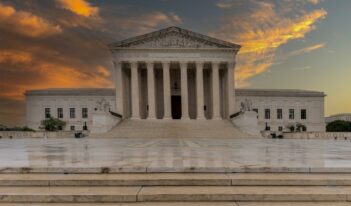
Scholar advocates using the Administrative Procedure Act to address EPA’s inter-regulatory contradictions.
As President Donald J. Trump’s tenure draws to a close, his Administration has rushed to push through a series of deregulatory policy changes. But the Trump Administration’s commitment to deregulation has led the U.S. Environmental Protection Agency (EPA) to take contradictory positions across administrative proceedings during the last four years, argues New York University School of Law Professor Richard L. Revesz in a forthcoming article.
Revesz makes the case for labeling much of the agency’s behavior as “arbitrary and capricious.” Under the Administrative Procedure Act, a reviewing court can set aside agency action—such as finalizing or repealing a rule—as arbitrary and capricious if it finds that the agency’s explanation for that action lacks a reasoned basis. Revesz proposes that EPA’s general pattern of inconsistency should qualify as arbitrary and capricious even if individual rules meet the standard.
To support his proposal, Revesz first turns to how EPA rejected, and then relied upon, indirect benefits to explain its decision to weaken air pollution standards under the Clean Air Act. For example, EPA withdrew a finding that regulating hazardous emissions from power plants was “appropriate and necessary,” reasoning that most of the regulation’s annual net benefits—about $25 to $80 billion—were indirect benefits that should not inform cost-benefit calculations. The regulation fell under one provision of the Clean Air Act, but the benefits fell under another.
Yet later in the same month, EPA relied on indirect benefits to justify finalizing the SAFE Vehicles Rule, which rolled back vehicle greenhouse gas emissions standards. EPA suggested that the rollback would not increase pollution because the agency could use other standards to address particulate matter in vehicle emissions. The agency, however, soon after declined an opportunity “to strengthen the National Ambient Air Quality Standards for particulate matter.”
Courts usually apply the arbitrary and capricious standard to single actions—one at a time. Yet Revesz argues that courts should apply the standard to “temporally proximate” rules. He suggests that if EPA exhibited the same contradictory treatment within a single regulation as it does across similar regulations, that single regulation would be struck down as arbitrary and capricious.
Revesz also points to EPA’s inconsistent approach to federalism. He alleges that the agency supported state autonomy only so long as states did not disrupt the Trump Administration’s deregulatory agenda. Shortly after taking office in 2018, for example, EPA Administrator Andrew Wheeler called for “general deference to states and tribes.” Yet Wheeler also defended a controversial decision to withdraw a waiver, granted under the Clean Air Act, that allowed California to set vehicle emissions standards more stringent than federal standards. He contended that the waiver forced other states to adhere to California’s standards, depriving them of the ability to determine their own regulatory needs. Twenty-three states, the District of Columbia, and four cities disagreed, petitioning for review of the agency’s decision in mid-2020.
EPA’s decision to revoke the waiver not only belies Wheeler’s “general deference” to states, but also contrasts with the agency’s approach to interstate air pollution. EPA implemented a rule that permitted upwind states to send excess air pollution to downwind states—“apparently unconcerned,” Revesz notes, that this forced downwind states to comply with upwind states’ decisions.
Revesz also flags what he sees as EPA’s inconsistent treatment of old pollution sources. For example, EPA repealed the Obama Administration’s Clean Power Plan, which limited carbon emissions from power plants and set goals for expanding the use of cleaner energy sources, because doing so would save old power plants from a regulatory “war on coal.” But for automobile emissions standards, EPA took the position that weakening regulatory standards was justified as a way of accelerating the replacement of old, environmentally unfriendly cars.
Revesz points out that EPA’s own analysis indicated that greater pollution from the weaker standards would “lead to hundreds of premature deaths.” Furthermore, the SAFE Vehicles Rule only covers cars and small trucks. In a separate proceeding, EPA attempted to exempt large “glider trucks”—which have old, heavily polluting diesel engines—from emissions limitations that would have cleared the way for their replacement with cleaner models.
In laying out EPA’s contradictory treatment of cost-benefit analysis, federalism, and old pollution sources, Revesz seeks to illustrate the need for a broader and “more robust” judicial review of agencies’ consistency.
Revesz does acknowledge that requiring agencies to observe a particular level of consistency across administrations would be unworkable. He expects, however, an agency to take a consistent approach to important policy design issues within a single administration.



